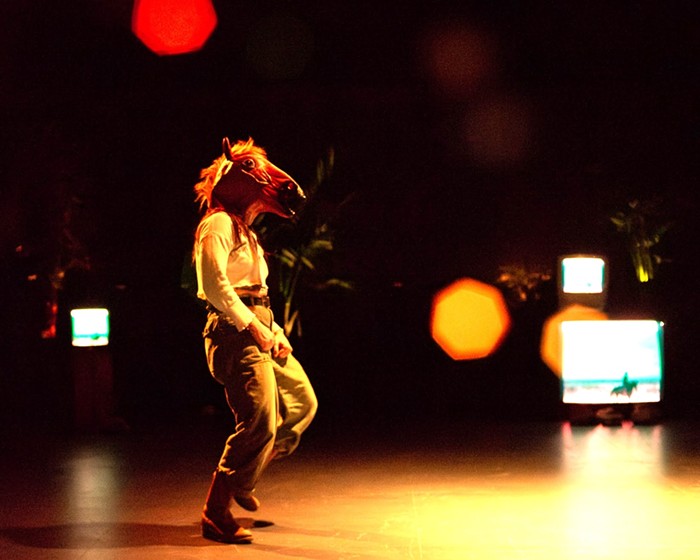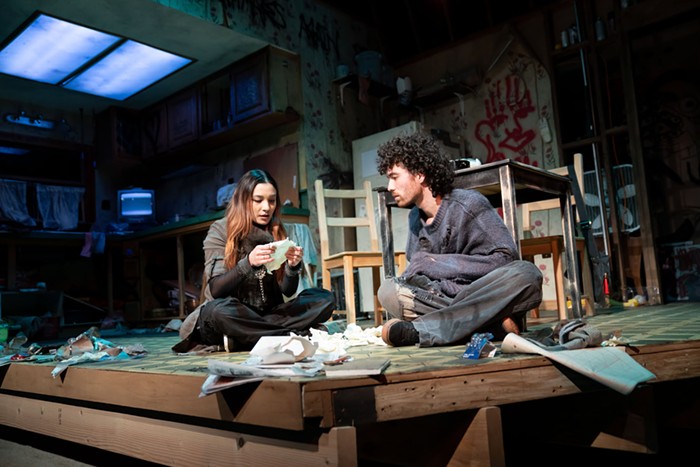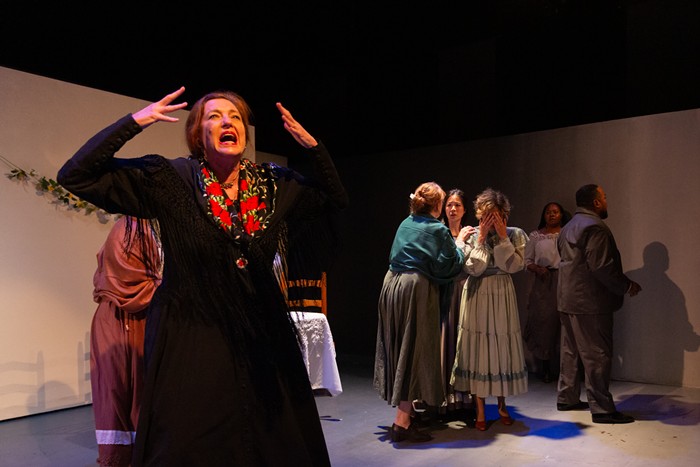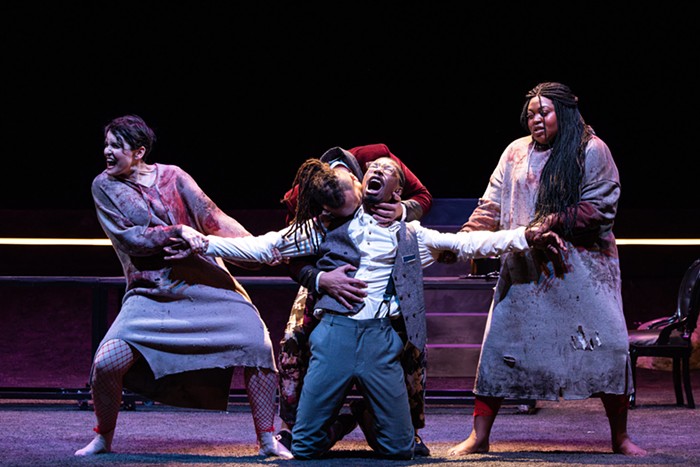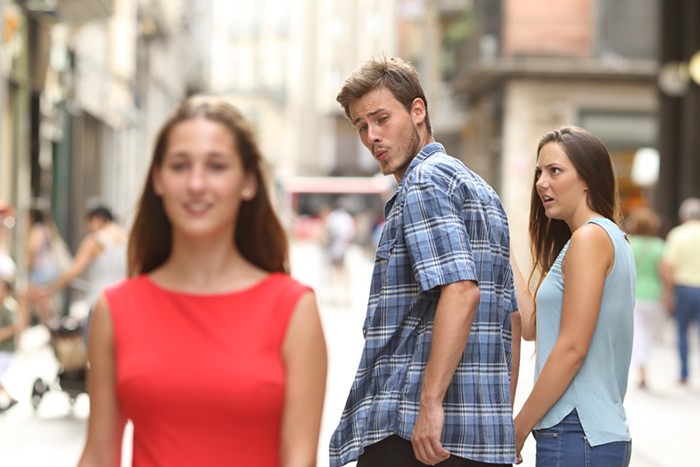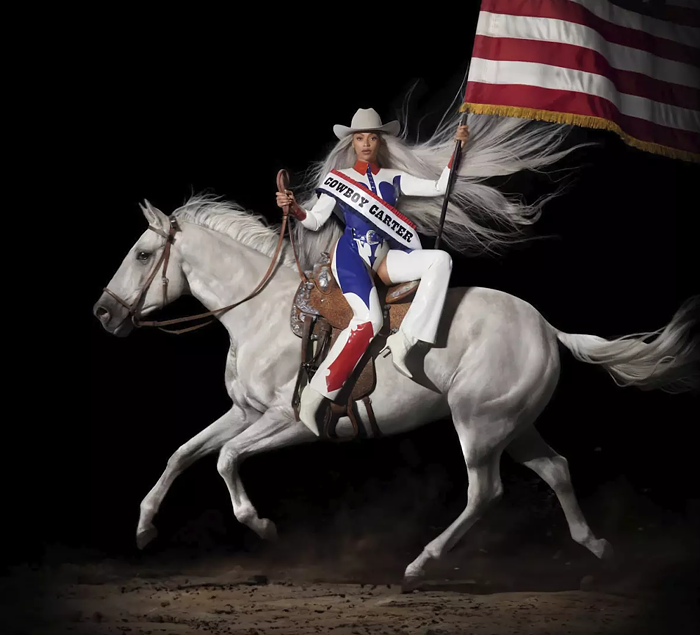Artists Repertory Theatre, 1516 SW Alder, 241-1278, Tues-Thurs & Sun 7 pm, Fri-Sat 8 pm, Sun 2 pm, through Feb 22, $15-32
It's to the gods' delight and mankind's chagrin that we ultimately can't control with whom we fall in love. At the heart of every mythological folly is usually a love conundrum that a Greek god orchestrates as a lesson for a misguided mortal. And so it goes in Edward Albee's modern morality tale The Goat, Or Who Is Sylvia?.
Our anti-hero is Martin, who would seem a very normal man. He's 50, smart, successful, and loves his wife and teenage son. But Martin has also somehow fallen in love with a goat he calls Sylvia, and when his clandestine trips to the barnyard are revealed, his life begins crashing down around him. On the surface The Goat seems like a straight-up tale of suburban angst gone wrong, but as the play's bizarreness stealthily creeps over you it becomes decidedly absurdist.
Allen Nause's performance as Martin, a bumbly, sweater-clad romantic desperately trying to explain to his family how he's inexplicably, hopelessly in love with a goat, is in turn titillating, repugnant, hilarious, woeful, and endearing. We're plagued with the image Martin describes of himself driving out to the country, searching for a house for his wife and instead accidentally finding a doe-eyed beauty standing beside a fence.
The show's fire comes in the second act when Martin's wife, Stevie, (Luisa Sermol) reads an indicting letter from Martin's best friend (Gary Powell). They're smart characters, and their repartee rings of the best sitcom timing, though Sermol has a tendency to over-dramatize. They're joined by their equally clever (and gay) teenage son (Christopher Woolsey) who throws his own wrenches into the mix.
The Goat hinges on Martin's defense of his bestial adulation, yet he's never fully able to explain why. As the helpless Martin points out, his love relates to nothing, which demands the audience to abandon preconceived notions. The goat is not just a goat, and as the characters repeatedly echo each other's syntax and correct one another's speech, Albee calls into question formerly established definitions and meanings. Meanwhile, ART has turned it all into a superbly unsettling production that asks all the right questions. ANNA SIMON
